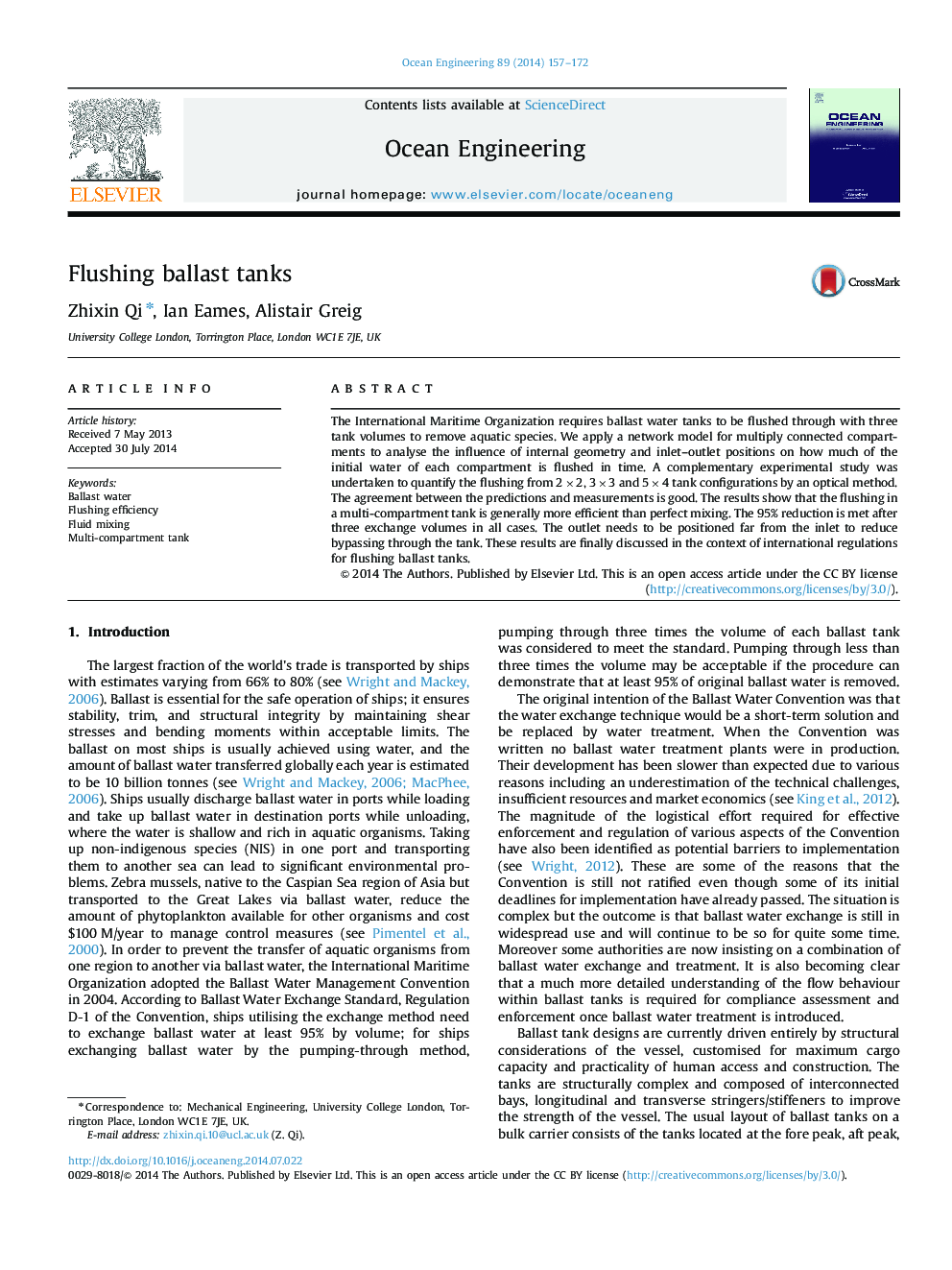| Article ID | Journal | Published Year | Pages | File Type |
|---|---|---|---|---|
| 8066290 | Ocean Engineering | 2014 | 16 Pages |
Abstract
The International Maritime Organization requires ballast water tanks to be flushed through with three tank volumes to remove aquatic species. We apply a network model for multiply connected compartments to analyse the influence of internal geometry and inlet-outlet positions on how much of the initial water of each compartment is flushed in time. A complementary experimental study was undertaken to quantify the flushing from 2Ã2, 3Ã3 and 5Ã4 tank configurations by an optical method. The agreement between the predictions and measurements is good. The results show that the flushing in a multi-compartment tank is generally more efficient than perfect mixing. The 95% reduction is met after three exchange volumes in all cases. The outlet needs to be positioned far from the inlet to reduce bypassing through the tank. These results are finally discussed in the context of international regulations for flushing ballast tanks.
Related Topics
Physical Sciences and Engineering
Engineering
Ocean Engineering
Authors
Zhixin Qi, Ian Eames, Alistair Greig,
